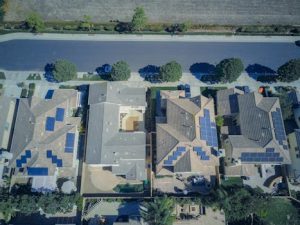LEED Certification 2.0: New Standards for Eco-Friendly Developments
The growing concern for the environment has sparked a movement towards sustainable and eco-friendly practices in various industries. With buildings and developments accounting for a significant portion of global energy consumption and greenhouse gas emissions, it is crucial to address their impact on the environment. This is where LEED Certification comes in.
LEED Certification: An Overview
LEED (Leadership in Energy and Environmental Design) is a globally recognized and widely used green building rating system. Developed by the United States Green Building Council (USGBC), it provides a framework for designing, constructing, and operating sustainable buildings and developments.
LEED Certification has been around for two decades, and over the years, it has become the standard for measuring the sustainability of buildings. The rating system has evolved, with new versions being released periodically to keep up with industry trends and advancements in technology. The latest version, LEED Certification 2.0, was officially launched in November 2018.
What is LEED Certification 2.0?
LEED Certification 2.0 can be described as a more refined and updated version of the previous rating system. It aims to raise the bar for sustainable developments and ensure that LEED-certified buildings are truly leaders in energy and environmental design.
The new standards for Eco-Friendly Developments under LEED Certification 2.0 focus on three main areas: energy efficiency, water conservation, and carbon emissions reduction. These categories are further divided into various credits and prerequisites that a development must meet to achieve certification.
Energy Efficiency
The energy efficiency category in LEED Certification 2.0 places a strong emphasis on reducing the carbon footprint of buildings. This is achieved through a combination of strategies, such as optimizing building design, using energy-efficient systems and materials, and incorporating renewable energy sources.
One of the major changes in this category is the introduction of a new credit called “Building Energy Performance.” This credit requires projects to submit their actual energy usage data and performance metrics to demonstrate their energy efficiency. This data is then compared to other similar buildings to determine the building’s overall energy performance.
Water Conservation
The second focus area in LEED Certification 2.0 is water conservation. With growing concerns over water scarcity in many parts of the world, this category has become even more critical. The new version of the rating system encourages developers to implement water-saving measures, such as using efficient irrigation systems, low-flow fixtures, and graywater recycling.
One of the notable changes in this category is the increased stringency of the Indoor Water Use Reduction credit. The new version requires projects to achieve a higher percentage of water savings compared to the previous version.
Carbon Emissions Reduction
The third and final focus area in LEED Certification 2.0 is carbon emissions reduction. This category takes a holistic approach to address the impacts of a development’s operations on the environment. It encourages projects to reduce their carbon footprint by promoting sustainable transportation, reducing waste, and using low-carbon materials.
The most significant change in this category is the addition of a new credit for Life Cycle Assessment (LCA). This credit requires projects to conduct an LCA to identify and reduce the environmental impacts of their materials, products, and systems.
Why is LEED Certification 2.0 Important?
LEED Certification 2.0 raises the bar for eco-friendly developments and ensures that buildings and developments are designed, constructed, and operated in a way that minimizes their environmental impact. It not only benefits the planet but also provides numerous benefits to developers and building owners, such as reduced energy and water consumption, lower operating costs, and increased property value.
Moreover, with the growing demand for sustainable buildings and developments, LEED Certification 2.0 provides a competitive advantage to projects that achieve certification. It sets them apart from conventional developments and showcases their commitment to sustainability, attracting environmentally conscious tenants and investors.
The Future of LEED Certification
As the sustainability movement continues to gain momentum, the need for more stringent standards and certifications is becoming increasingly apparent. With LEED Certification 2.0, the USGBC has taken a significant step towards promoting sustainable development. However, the work doesn’t stop here.
The USGBC has already announced plans for future updates to LEED Certification, with a focus on equity, resilience, and health and well-being. These additions and improvements will further elevate the impact of LEED Certification, making it an even more critical tool in creating a sustainable built environment.
Conclusion
LEED Certification 2.0 sets the standard for eco-friendly and sustainable developments. It not only encourages environmentally responsible practices but also provides numerous benefits for developers, building owners, and the planet. With the growing demand for sustainability, LEED Certification is an essential tool for creating a better, greener future.








